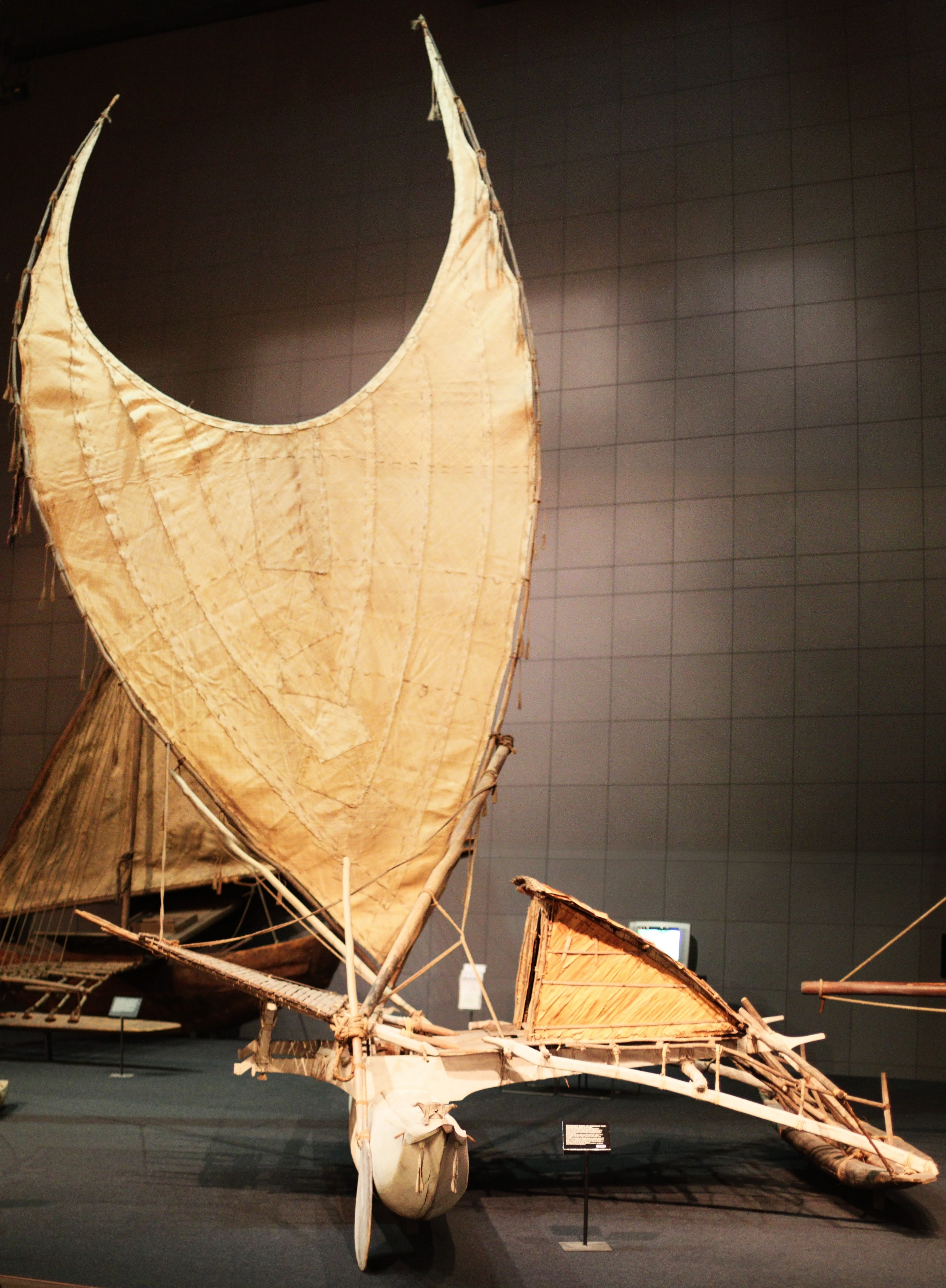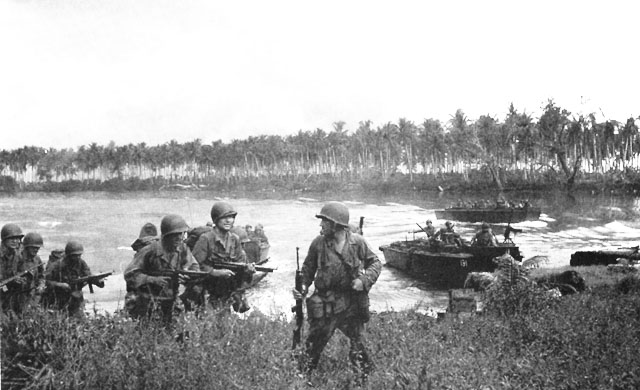|
Proto-Temotu Language
Proto-Temotu (abbreviated as PTm) is the reconstructed ancestor of the Temotu languages of Temotu Province, Solomon Islands. It belongs to the Oceanic branch of the Austronesian languages. A partial reconstruction was done by Malcolm Ross and Åshild Næss in 2007, with further revisions by William James Lackey and Brenda H. Boerger in 2021. Descendants Proto-Temotu diversified into three primary branches: Reefs – Santa Cruz, Utupua, and Vanikoro. Originally, some linguists had proposed to group Utupua and Vanikoro languages under a single Utupua–Vanikoro subgroup, sometimes labelled “Eastern Outer Islands”. Tryon & Hackman (1983), Lynch & Tryon (1985). The unity of that subgroup has been however questioned by Lackey & Boerger (2021), who fail to identify shared phonological innovations for it. Innovations Proto-Temotu was a phonologically conservative language in many respects, and was evidently an early descendant of Proto-Oceanic. For example, it retained Pr ... [...More Info...] [...Related Items...] OR: [Wikipedia] [Google] [Baidu] |
Temotu Province
Temotu (or Te Motu, literally "the island" in Polynesian) is the easternmost province of Solomon Islands. The province was formerly known as Santa Cruz Islands Province. It consists, essentially, of two chains of islands which run parallel to each other from the northwest to the southeast. Its area is . Administrative divisions Temotu Province is sub-divided into the following wards: Temotu Province (pop 21,362) * Reef Islands ** Polynesian Outer Islands (353) ** Fenualoa (1,305) ** Nipua/Nopoli (880) ** Lipe/Temua (796) ** Manuopo (1,030) ** Nenumpo (1,163) * Santa Cruz Islands ** Graciosa Bay (1,264) ** North East Santa Cruz (1,843) ** Nanggu/Lord Howe (1,863) ** Nea/Noole (1,770) ** Nevenema (947) ** Luva Station (2,335) ** Neo (1,558) * isolated islands and groups ** Duff Islands (509) ** Utupua (1,168) ** Vanikoro (1,293) ** Tikopia (1,285) Islands The islands or island groups which make up the province are: * Anuta * Duff Islands (including Taumako) * Fatutaka ... [...More Info...] [...Related Items...] OR: [Wikipedia] [Google] [Baidu] |
Reefs – Santa Cruz Languages
The Reef Islands – Santa Cruz languages (usually shortened to Reefs – Santa Cruz, abbreviated RSC) are a branch of the Oceanic languages comprising the languages of the Santa Cruz Islands and Reef Islands: * Äiwoo (also known as ''Reefs'') *languages of Nendö island (Santa Cruz): ** Nanggu (also known as ''Engdewu'') ** Natügu ** Nalögo ** Noipä (Noipx) Background The debate in Oceanic linguistics dated from the Second International Conference on Austronesian Linguistics in 1978, where two opposing papers were presented. Peter Lincoln argued that the Reefs – Santa Cruz languages were Oceanic, while Stephen Wurm argued that they were Papuan languages. Classification These languages were only definitively classified as part of the Oceanic subgroup of the Austronesian family after a series of papers that refuted the three major arguments for classifying them as either primarily Papuan languages or at least heavily influenced by a Papuan substrate. * Malcolm Ross a ... [...More Info...] [...Related Items...] OR: [Wikipedia] [Google] [Baidu] |
Bismarck Archipelago
The Bismarck Archipelago (, ) is a group of islands off the northeastern coast of New Guinea in the western Pacific Ocean and is part of the Islands Region of Papua New Guinea. Its area is about 50,000 square km. History The first inhabitants of the archipelago arrived around 30–40,000 years ago. They may have traveled from New Guinea, by boat across the Bismarck Sea or via a temporary land bridge, created by an uplift in the Earth's Crust (geology), crust. Later arrivals included the Lapita people. The first European to visit these islands was Dutch explorer Willem Schouten in 1616. The islands remained unsettled by western Europeans until they were annexed as part of the German protectorate of German New Guinea in 1884. The area was named in honour of the Chancellor of Germany (German Reich), Chancellor Otto von Bismarck. On 1888 Ritter Island eruption and tsunami, 13 March 1888, a volcano erupted on Ritter Island causing a megatsunami. Almost the entire volcano fell into t ... [...More Info...] [...Related Items...] OR: [Wikipedia] [Google] [Baidu] |
Lapita Culture
The Lapita culture is the name given to a Neolithic Austronesian people and their material culture, who settled Island Melanesia via a seaborne migration at around 1600 to 500 BCE. They are believed to have originated from the northern Philippines, either directly, via the Mariana Islands, or both. They were notable for their distinctive geometric designs on dentate-stamped pottery, which closely resemble the pottery recovered from the Nagsabaran archaeological site in northern Luzon. The Lapita intermarried with the Papuan populations to various degrees, and are the direct ancestors of the Austronesian peoples of Polynesia, eastern Micronesia, and Island Melanesia. Etymology The term 'Lapita' was coined by archaeologists after mishearing a word in the local Haveke language, ''xapeta'a'', which means 'to dig a hole' or 'the place where one digs', during the 1952 excavation in New Caledonia. The Lapita archaeological culture is named after the type site where it was first unco ... [...More Info...] [...Related Items...] OR: [Wikipedia] [Google] [Baidu] |
Asumbuo Language
Asumbuo (''Asubuo'' in local orthography; ''Asumboa'' or ''Asuboa'' in some sources) is a nearly extinct language spoken on the island of Utupua, in the easternmost province of the Solomon Islands. Tryon (1994). Affiliation Like the two other languages of Utupua (Tanimbili and Amba), Asumbuo belongs to the Temotu subgroup of the Oceanic family, itself part of the Austronesian phylum. Language vitality With only about 10 speakers, Asumbuo is a highly endangered language. Together with its neighbour Tanimbili Tanimbili (''Tanibili''), or Nyisunggu, is a nearly-extinct language spoken on the island of Utupua, in the easternmost province of the Solomon Islands Solomon Islands is an island country consisting of six major islands and over 900 sma ..., it is currently being replaced by Amba (or ''Nebao''), the main language of Utupua. References Bibliography *. Languages of the Solomon Islands Temotu languages Endangered Austronesian languages Severely e ... [...More Info...] [...Related Items...] OR: [Wikipedia] [Google] [Baidu] |
Utupua–Vanikoro Languages
The Temotu languages, named after Temotu Province of the Solomon Islands, are a branch of Oceanic languages proposed in Ross & Næss (2007) to unify the Reefs – Santa Cruz languages with Utupua and Vanikoro, each a group of three related languages. History of classification The Reefs-Santa Cruz languages had previously been considered Papuan languages, Papuan, but Ross & Næss (2007) established that their closest relatives were the Utupua–Vanikoro languages, previously thought to be Central–Eastern Oceanic languages, Central–Eastern Oceanic. However, Roger Blench (2014) argues that the aberrancy of Utupua and Vanikoro, which he considers to be separate branches that do not group with each other, is due to the fact that they are actually non-Austronesian languages. Blench (2014) doubts that Utupua and Vanikoro are closely related, and thus should not be grouped together. Since each of the three Utupua and three Vanikoro languages are highly distinct from each other, Blenc ... [...More Info...] [...Related Items...] OR: [Wikipedia] [Google] [Baidu] |
Vanikoro
Vanikoro (sometimes wrongly named ''Vanikolo'') is an island in the Santa Cruz group, located to the Southeast of the main Santa Cruz group. It is part of the Temotu Province of the Solomon Islands. The name ''Vanikoro'' is always used as though it referred to a single island, due to both its geophysical and cultural unity. However, technically it is a group of several nearby islands surrounded by a single belt of coral reef. Only the two major islands are inhabited: the bigger one Banie, and the smaller one Teanu (or Tevai). Other, uninhabited islets in the Vanikoro group include Manieve, Nomianu and Nanunga. The total area of the Vanikoro group is . Population and languages The of Vanikoro consist of two different populations, who tend to live separately. The Melanesian majority, about 800 people, are the descendants of the original population of Vanikoro. As far as we know, they have been present on the island since Lapita times – about 3,200 years ago. A minority ... [...More Info...] [...Related Items...] OR: [Wikipedia] [Google] [Baidu] |
Utupua
Utupua is an island in the Santa Cruz Islands, located 66 km to the Southeast of the main Santa Cruz group, between Vanikoro and Santa Cruz proper ( Nendo Island). This island belongs administratively to the Temotu Province of the Solomon Islands. Geography Utupua is a high u-shaped island surrounded by a coral reef. Its land surface is and its highest point . Utupua has a population of 848 inhabitants (1999 census) scattered in small villages. The main villages on the island are Avita, Malombo, Tanimbili, Apakho, and Nembao. Utupua has a forested path that leads to viewpoints overlooking the coral reef that encloses the island. Languages Three Oceanic languages are spoken on Utupua: * Amba, or ''Nembao'' * Asumboa, or ''Asubuo'' *Tanimbili, or ''Tanibili'' History First sighting by Europeans was in September 1595 by the second Spanish expedition of Álvaro de Mendaña. More precisely it was sighted by Lorenzo Barreto Lorenzo may refer to: People * Lorenzo (na ... [...More Info...] [...Related Items...] OR: [Wikipedia] [Google] [Baidu] |
Malcolm Ross (linguist)
Malcolm David Ross (born 1942) is an Australian linguist. He is the emeritus professor of linguistics at the Australian National University. Ross is best known among linguists for his work on Austronesian and Papuan languages, historical linguistics, and language contact (especially metatypy). He was elected as a Fellow of the Australian Academy of the Humanities in 1996. Career Ross served as the Principal of Goroka Teachers College in Papua New Guinea from 1980 to 1982, during which time he self-statedly become interested in local languages, and began to collect data on them. In 1986, he received his PhD from the ANU under the supervision of Stephen Wurm, Bert Voorhoeve and Darrell Tryon. His dissertation was on the genealogy of the Oceanic languages of western Melanesia, and contained an early reconstruction of Proto Oceanic. Malcolm Ross introduced the concept of a linkage, a group of languages that evolves via dialect differentiation rather than by tree-like splits. ... [...More Info...] [...Related Items...] OR: [Wikipedia] [Google] [Baidu] |





.png)